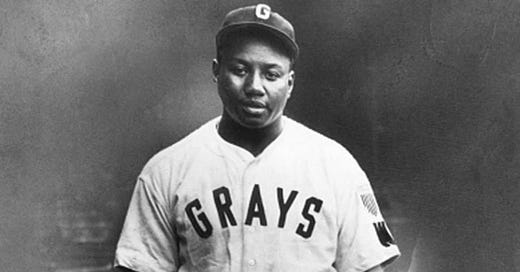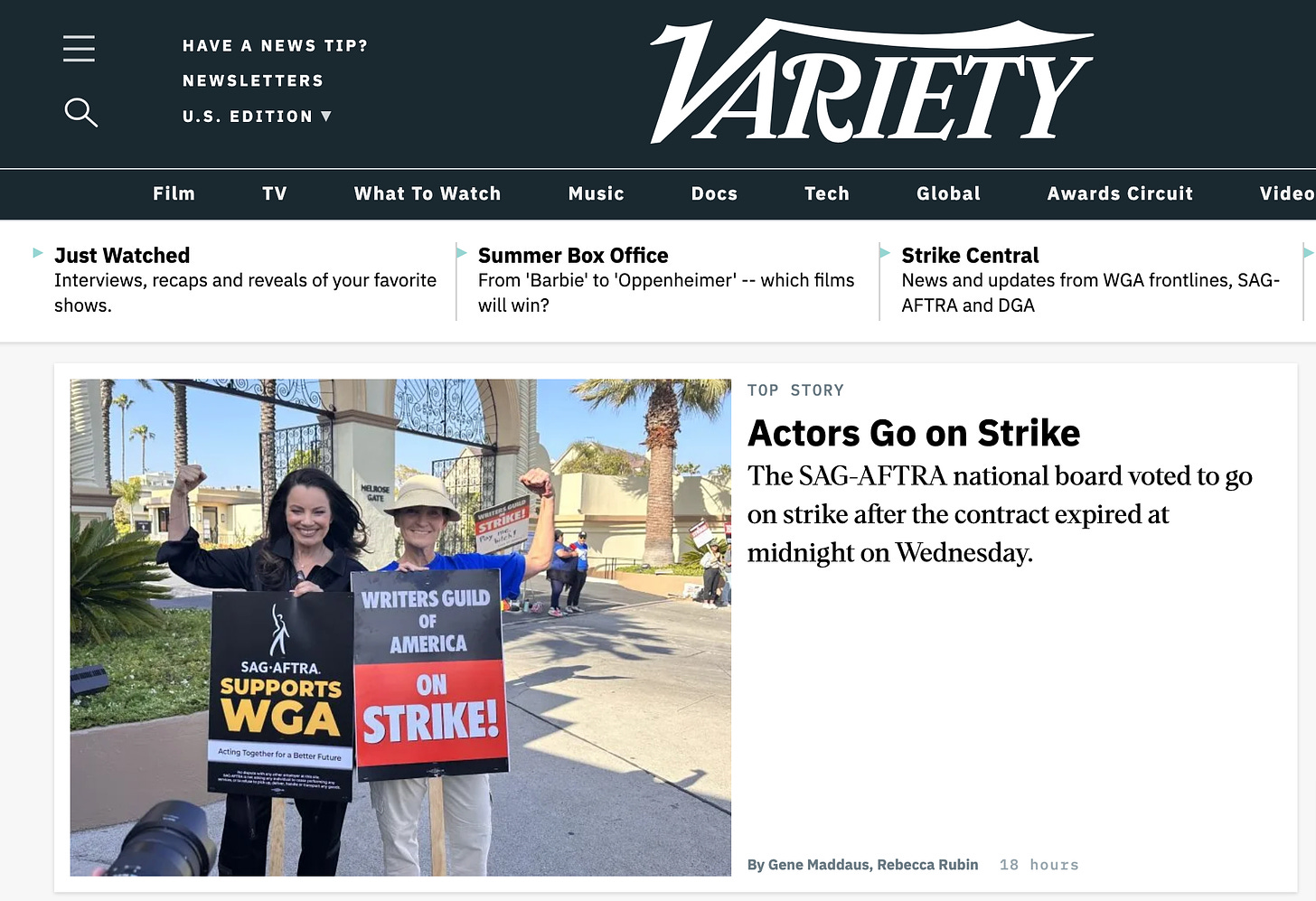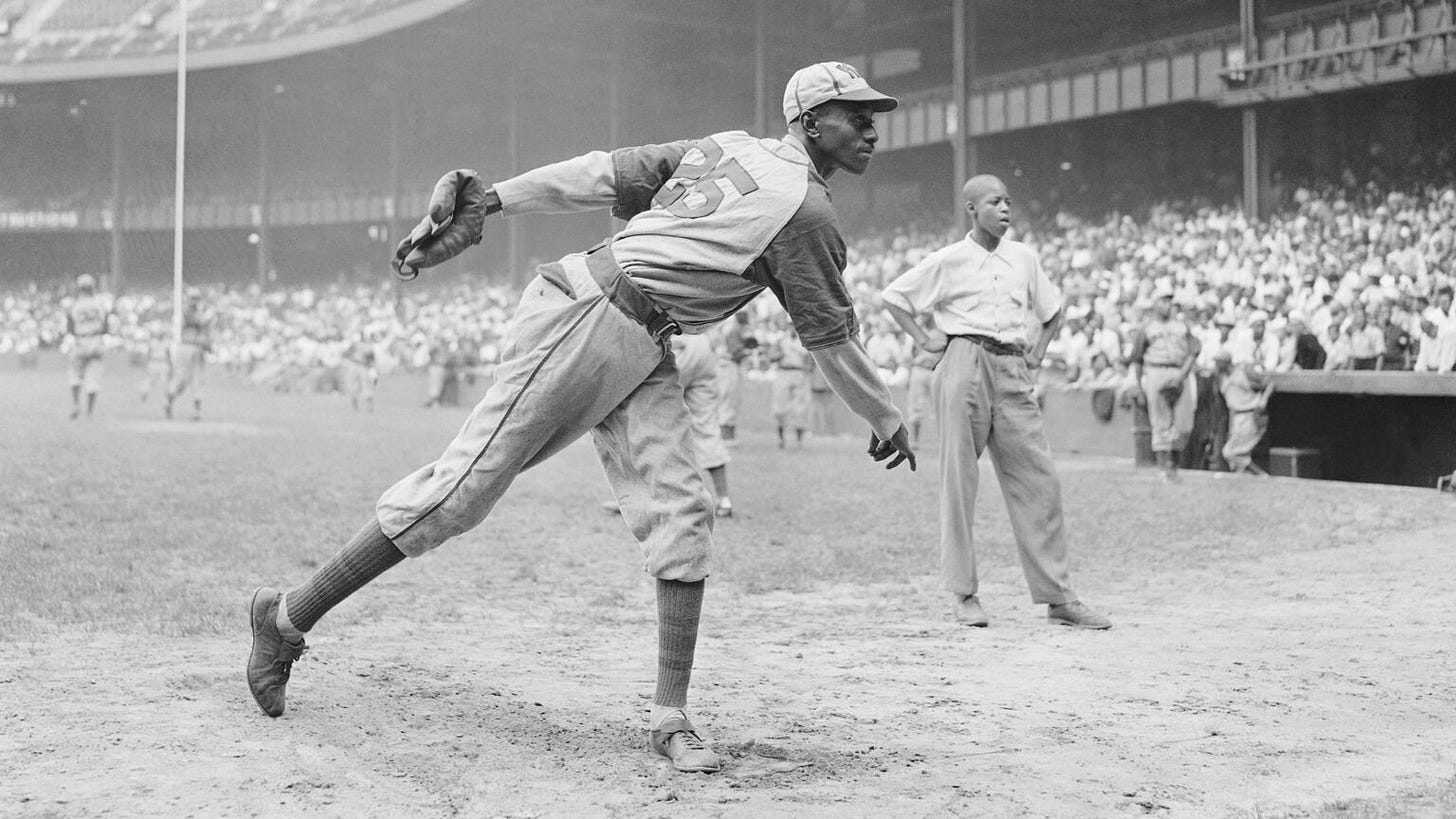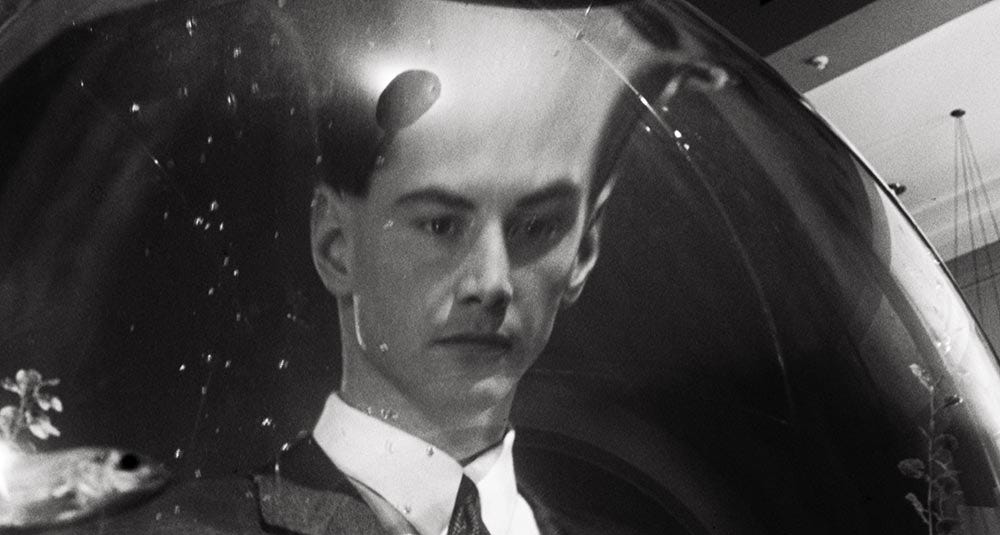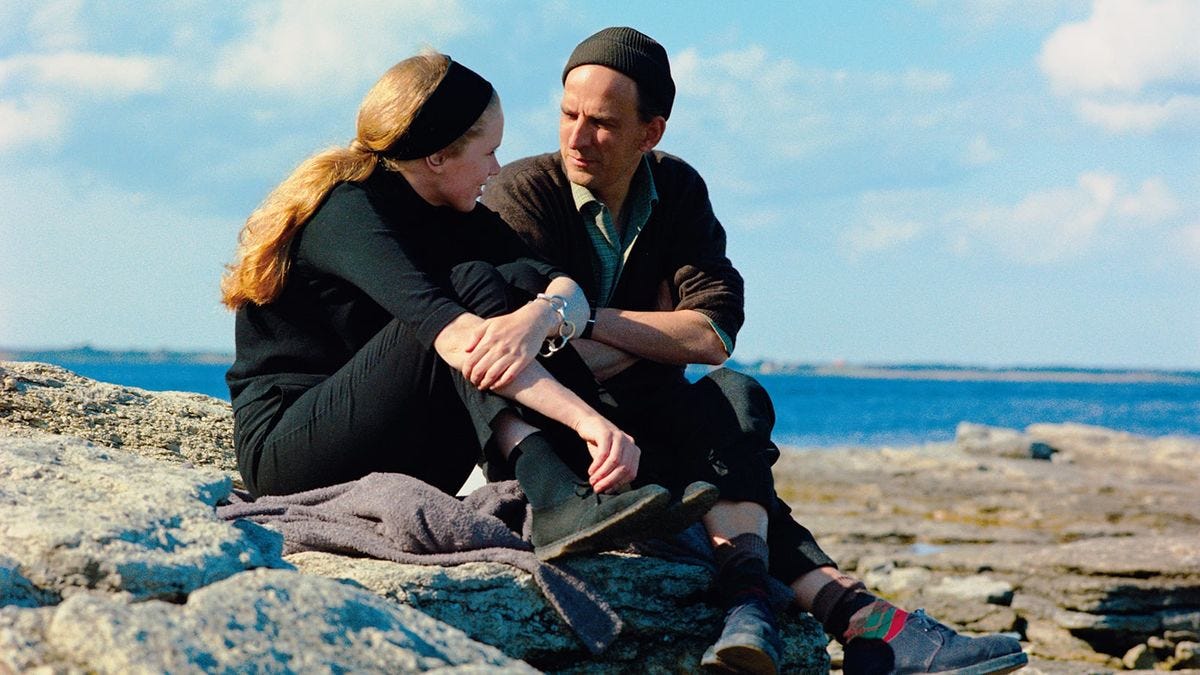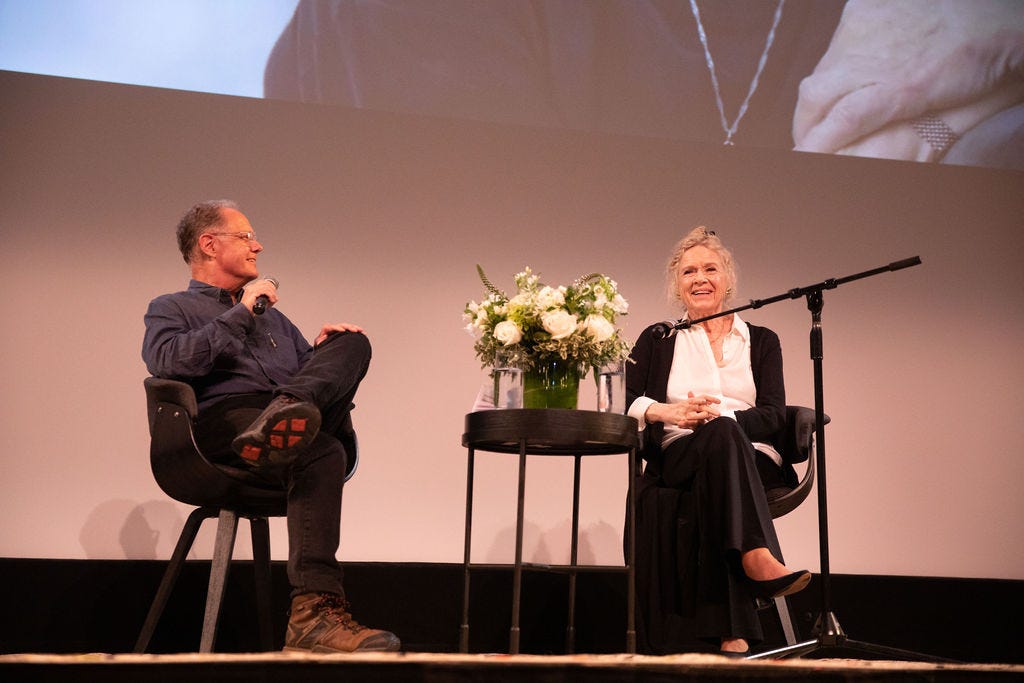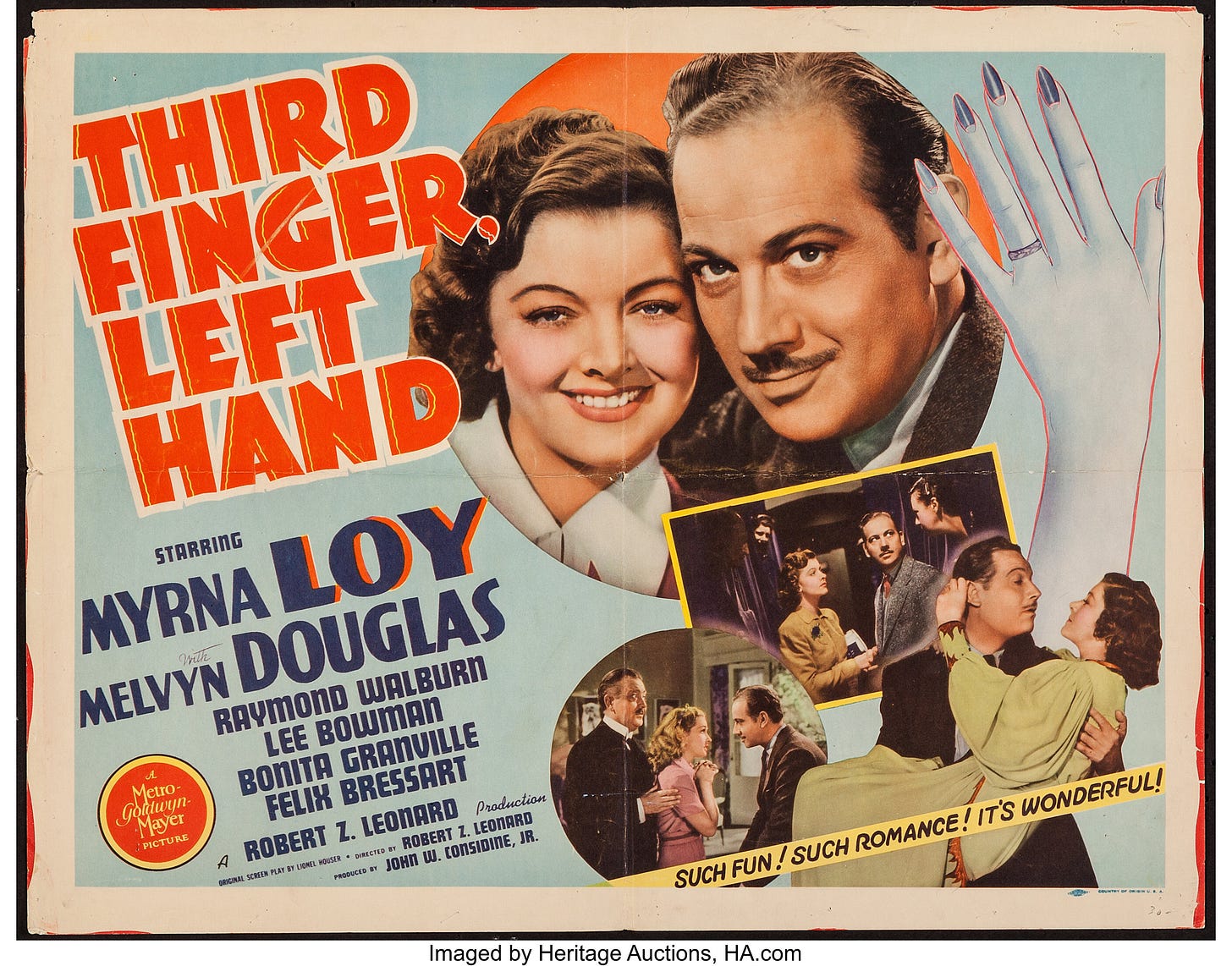What to Watch on VOD: "The League"
Plus: "Johnny Mnemonic: In Black and White," Happy birthday Ingmar Bergman, and more.
As of yesterday, Hollywood is facing a double strike — writer and actors — for the first time in 63 years. If you don’t know why that matters or you think they’re just being whiny media crybabies, please read this backgrounder by Vox’s Alissa Wilkinson, or the new New Yorker article about the “Orange Is The New Black” actors who were still bartending or contemplating going on food stamps while starring in a hit Netflix show, or anything that explains why the economics of streaming TV represent a form of digital peonage that in no way resembles making a living and at worst is a form of identity theft. What do I mean by “digital peonage” and “identity theft”? Per Wilkinson, “According to SAG-AFTRA national executive director Duncan Crabtree-Ireland, the AMPTP's proposal on AI included allowing background actors to be scanned, paid for one day's work, and then be used however they want in perpetuity for the rest of the universe forever.”
“The League” (⭐ ⭐ ⭐, in theaters and for rental at Amazon, Apple TV, YouTube, and elsewhere) is a documentary about baseball’s Negro Leagues that’s been fashioned by director Sam Pollard (“MLK/FBI”) in the Ken Burns mode: Lots of archival deep dives, stirring music, and the voices of the people who were there. But it’s a story that most Americans (especially white Americans) know only in outline, through names like Satchel Paige (above), and the thoroughness of “The League” – the way Pollard embeds it in a century of Black social history, struggle, and advancement – makes for an experience that’s both illuminating and remarkably entertaining. As much as Pollard can only skim the surface of his subject in 103 minutes, a viewer still comes away with a richness of event and personality and a sorrow that the Negro Leagues had to exist at all – and also that they were unceremoniously dumped after Jackie Robinson broke Major League Baseball’s color line in 1947.
Pollard points out that there were Black players on white teams during the 19th century, and only in 1887 did team owners, under pressure from racist star players like “Cap” Anson, vote to segregate. The Great Migration and the Harlem Renaissance saw the rise of the Negro National League and the Eastern Colored League, with teams like the Kansas City Monarchs and the Philadelphia Giants, powerhouse talents like Josh Gibson, and visionary entrepreneur-owners like Rube Foster. “The League” celebrates individual players – and has an amazing well of film footage and archival reminiscences from dozens of Negro League alumni, including Willie Mays and Hank Aaron – but its eye is constantly on the prize of Black baseball’s larger place within mid-20th century America, when the sport was the third largest economic engine in Black communities and a source of immense social pride even as baseball commissioner Kenesaw Mountain Landis steadfastly refused to consider integrating the sport.
“The League” is mournfully alive, too, to the irony that Robinson’s signing to the Brooklyn Dodgers spelled the end of this vibrant culture. Pollard points out that any player who wasn’t on the level of Robinson or Buck O’Neil or the aging Paige – which was most of them – ended up dropping out of the game, and any rosy feelings we may have toward Dodgers owner Branch Rickey for signing Robinson get a sharp corrective when we learn that Rickey didn’t compensate the Negro League’s Monarchs for their star first baseman – he just took him, as other white owners did with their first Black players. (“They’re not even a real league,” Rickey is reported to have snorted derisively.) Pollard ties the betrayal to the larger crisis in post-WWII Black communities – “After the integration of the major leagues, you just see the deterioration,” one historian comments here – and whether that’s a reach or not, “The League” still commemorates a cultural moment of hope and accomplishment, a place where Black Americans could “be free to just be us, without the white gaze.” It’s a solid and stirring documentary – you should see it.
Curio of the week: “Johnny Mnemonic: In Black and White” (1995, ⭐ ⭐ 1/2, streaming on the Criterion Channel) – Can desaturating its color turn a bomb into a classic? Not really, but it can still put a movie through interesting changes, especially if it wasn’t really a bomb to begin with. Artist Robert Longo got a dent in his reputation by directing his only feature film, a day-after-tomorrow thriller starring a young Keanu Reeves, hot off “Speed,” as a black-market courier who uploads information into a hard drive in his brain. The setting is a futuristic New York City of, um, today, which only sounds hilarious until you read the opening titles: “Second decade of the 21st Century: Corporations rule. The world is threatened by a new plague.” Maybe a little too on the nose, but the screenplay was written by William Gibson, who coined the term “cyberspace” and who turns out to have been right about everything.
Critics drubbed “Johnny Mnemonic” mercilessly on its release in 1995, but Longo claims he always wanted to shoot the film in black and white, the better to ape subversive art-house sci-fi like Jean-luc Godard’s “Alphaville” and cult objects like “Tetsuo: The Iron Man.” In 2021, the director got his chance to restore and color-time the film into a lustrous bichrome version that doesn’t smooth out the movie’s rough edges but rather makes a dreamlike virtue of them. In the process, Gibson’s vision of a hellish modern world where megacorporations control everything and people live out entire existences on the Internet doesn’t feel prescient so much as dead-on prophetic. Factor in a supporting cast of Ice-T, Henry Rollins, Dolph Lundgren, cult actor-director Takeshi Kitano, and German acting Valkyrie Barbara Sukowa (a.k.a. Mrs. Robert Longo), and “Johnny Mnemonic” is a time capsule that looks simultaneously backwards and forwards. Plus, Keanu is so endearingly wooden that his performance has a found-object charm of its own, one that black-and-white enshrines in a kind of kitsch nobility. Is it a better movie for the change? I’m not convinced. But it’s certainly worth a look, and I wouldn’t have said that before.
In other news: Happy 105th birthday, Ingmar Bergman! Those who celebrate the legendary Swedish director’s psychological acuity and downer filmmaking brilliance can pick from any or all chapters of his career: The early breakthroughs “The Seventh Seal” and “Wild Strawberries” (both 1957); the “God’s silence” trilogy of “Through a Glass Darkly” (1961), “Winter Light” (1962), and “The Silence” (1963); the late run of masterpieces from “Cries and Whispers” (1972) and “Scenes From a Marriage” (1974) through “Fanny and Alexander” (1982). All are streaming on the Criterion Channel, and many can be found on Max and/or Kanopy or for rent on a number of platforms; see Justwatch.com for specifics. That also goes for the late-1960s work that, to my mind, shows Bergman at the peak of his powers: “Persona” (1966), “Shame” (1968), and “The Passion of Anna” (1969). These are movies that burrow beneath the skin of human relationships and existence itself with a reckless confidence that’s by turns dreamlike (“Persona”), savage (“Shame”), and heartbroken (“The Passion of Anna”), and it’s hardly coincidental that Liv Ullmann (below, with Bergman) is in all three of them.
Re: Ullmann – it’s always discombobulating to realize that a deathless screen icon is not only life-sized but lives in your town. Ullmann married Boston real estate developer and hotelier Donald Saunders in 1985 and resided for many years with him in Gloucester, Mass., from where she would occasionally descend into Boston for events like a 2016 50th-anniversary screening of “Persona” at which I was lucky to serve as moderator.
Ullmann and Saunders now live in Boston, and she returned to the Coolidge Corner Theatre again this week for a private screening of “Liv Ullmann – A Road Less Traveled,” a glowing documentary that had its premiere at Cannes in May and will be theatrically released later this year. Again, I was lucky to share the stage with her for a post-film Q&A (unavailable on video, unfortunately). The actress is 85 now and frailer than she was seven years ago – honestly, we all are – but her memories are, if anything, more pellucid than ever, and the way she spoke with depth of feeling to the historical moment and the moment in the theater itself was intensely moving. We are blessed to still have her with us, and blessed, too, that the films are there to be seen.
Classic of the Week: “Third Finger, Left Hand” (⭐ ⭐ ⭐, 1940, Turner Classics on Sunday July 16 at 6:00 AM, so set your DVR). We tend to remember Myrna Loy in tandem with the “Thin Man” movies and her co-star William Powell; as Nick and Nora Charles, they made marriage seem a never-ending field of play. But Loy could hold down a comedy on her own, and she’s delightful as a fashion editor who invents a fictitious husband to keep the office wolves away but is backed into a corner of pretending that painter Melvyn Douglas is that husband. We all know where this is going, but it’s the getting there that matters, and even if MGM was too swank to really do screwball well (“Libeled Lady” notwithstanding), Loy had by now patented a winsome, practical unflappability that made her both adorable and one of the more sneakily sexy stars of classic-era Hollywood. The movie’s on DVD but not available for streaming anywhere, so grab this while you can and enjoy the late-inning scene where this cat-faced actress from Helena, Montana, pretends to be a loud-mouthed bawd from Brooklyn.
Enjoy your weekend and don’t hesitate to weigh in with any thoughts, stray or otherwise.
If you enjoyed this edition of Ty Burr’s Watch List, feel free to pass it along to others.
If you’re not a paying subscriber and would like to sign up for additional postings and to join the discussions — or just help underwrite this enterprise, for which the author would be very grateful — here’s how.
Refer friends to Ty Burr’s Watch List and get credit for new subscribers! When you use the referral link below, or the “Share” button on any post, you'll receive special benefits:
Get a 1 month comp for 3 referrals
Get a 3 month comp for 5 referrals
Get a 6 month comp for 25 referrals. Simply send the link in a text, email, or share it on social media with friends.
There’s a leaderboard where you can track your shares, too. To learn more, check out Substack’s FAQ.

